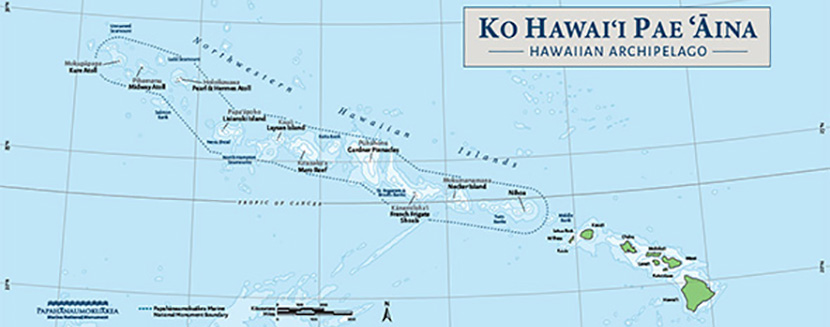In lieu of the most recent fissure eruption in the Puna District of the Island of Hawai‘i, we want to clear up some confusion about our volcanoes. Unlike the rest of the volcanoes that surround the Ring of Fire, the Hawaiian Islands were and still are created by a hotspot magma chamber in the asthenosphere. Over this hotspot, the Pacific Tectonic Plate slowly moves. Due to this type of uprising of magma, our Hawaiian Islands form as shield volcanoes.

So what is the big confusion? As most of the world is not familiar with the idea that there are many different types of volcanoes and lava flow events, one of the biggest things has been that many people have thought that the eruptions have been signs that we will be the next Mt. St. Helens or Mt. Vesuvius eruptions. THIS IS WRONG! Mt. St. Helens and Mt. Vesuvius are identified as Stratovolcanoes. Most stratovolcanoes are characterized by their steep slopes, explosive eruptions, and highly viscous, pyroclastic lava flows. Over time, pressure builds up under layers of cooled lava that hardened before having the chance to flow any significant distance, then the pressure exceeds the strength of the cooled lava, causing a very strong, violent, explosion.
**One of the most recent examples of a stratovolcano is the sudden eruption of Mt. Fuego, just outside Guatemala City, on 3 June 2018. Unlike Mt. Fuego, our currently erupting shield volcano, Kilauea, has gentle slopes, and very fast moving ‘a‘a and pahoehoe flows. Our volcano, in fact, has been erupting since 1983, forming new landscapes across the south east part of the Island of Hawai‘i! Kilauea has been reshaping and adding to the island of many years, and it will likely continue for many more!
Life Cycle of the Hawaiian Archipelago!
Over the last 65 million years, the Pacific tectonic plate has been slowly moving over the same hotspot that Hawaii Island sits over today. In the beginning, the islands were nothing more than small submarine volcanoes, just like Lōʻihi, our newest forming island. As the hotspot feeds the volcano, and magma is brought to the surface of the lithosphere, the size of the island grows, eventually breaking the surface of the ocean. At this point it becomes an island, continuously growing, as the Big Island is still doing now, until the tectonic plate has moved away from the hotspot (e.g. all other Hawaiian Islands). Once the volcanoes become dormant, or extinct, the island begins to weather away, becoming smaller and smaller. Evidence of this: Notice the difference in size from Hawaii Island to Oahu, Kauai, and Niihau. Of course, not just size is indicative, but also the amount of steep valleys that have been carved out of the landscape due to rivers, as well as the amount of dirt that has formed. As these islands grow and shrink, coral reefs also grow, creating barrier reefs. The most well known is the Great Barrier Reef along the northeast coast of Australia.
Midway Atoll, in the Northwestern Hawaiian Islands.
As these islands become smaller and the reefs continue to grow, the island eventually forms a lagoon in the middle, and they become what is known as an atoll. Atolls are primarily coral reef ecosystems where the rate of growth of the coral is able to keep up with the rate of erosion of the extinct volcano/island. Check out this cool animation of the formation of an atoll!
However, once the coral can no longer keep up with growth, and the entire island has gone back below the surface of the water, it then is defined as a seamount. This is the last part of the cycle of an island before it is either levelled off to the seafloor, or is subducted into a trench.

TL;DR?? We, on the Island of Hawaii, as well as the rest of the state, are SAFE! It is perfectly safe to still visit Hawai‘i, and explore! The Islands are still open for business! We are not going to be the next Guatemala or Pompeii. The only thing you can’t currently do is go into the Puna District, nor can you visit Volcanoes National Park. We welcome all visitors from around the world to enjoy our beautiful beaches, hiking trails, mountain tops…and so much more!
Author: B. Fuemmeler
